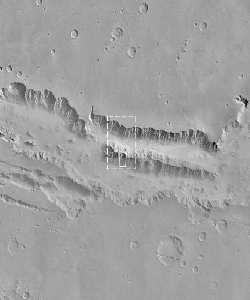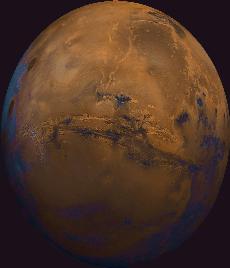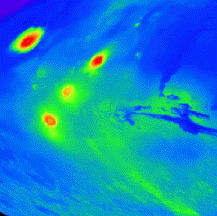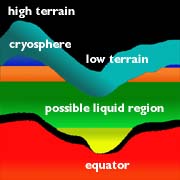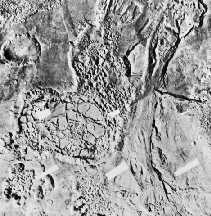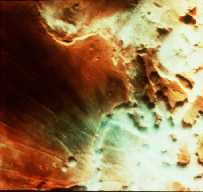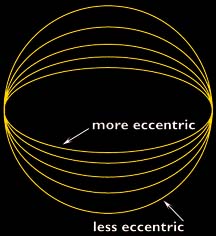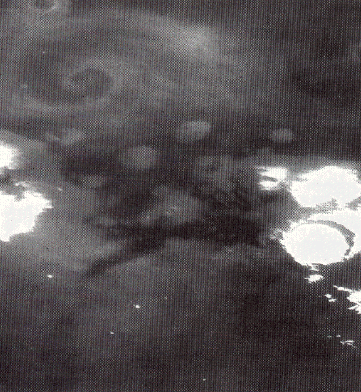Valles Marineris, from U.S. Geological
Survey Mars Digital Image Mosaic, reproduced at a scale of 230
meters/pixel.
Click on image for full size
Image from: Malin Space Science Systems
Click on image for full size
Image from: Malin Space Science Systems
Related links:
More about Valles Marineris
This image shows the steep slopes of Valles Marineris at higher resolution.
Very high resolution images returned by the Mars Global Surveyor spacecraft allow closer examination of this unusual canyon. These images show slopes descending steeply to the north and south


